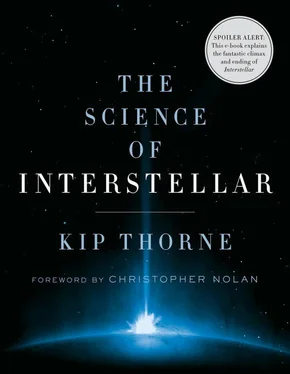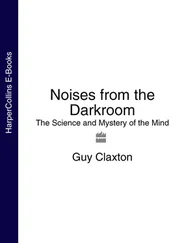Lynda:Could you have a generalist blight that becomes much more lethal?
Meyerowitz:Something like that has happened before. Early in the Earth’s history, when cyanobacteria started making oxygen, thereby changing radically the composition of the Earth’s atmosphere, they managed to kill most everything else on Earth.
Leadbetter:But the oxygen was a lethal byproduct, a poison, produced by the cyanobacteria; not a generalist pathogen.
Baltimore:We may not have seen it, but I can imagine a very lethal specialist pathogen becoming a lethal generalist. It could spread the range of plants it attacks with the help of an insect that carries it to many species. A Japanese beetle, for example, which eats something like two hundred different plant species, could infect many species with the pathogen it carries, and the pathogen might adapt to attack those species, lethally.
Meyerowitz:I can conceive of a totally lethal generalist: a pathogen that attacks chloroplasts . Chloroplasts are something that all plants have in common. They are crucial to photosynthesis (the process where a plant combines sunlight with carbon dioxide from the air, and water from its roots, to produce carbohydrates that it needs for growth). Without chloroplasts, a plant will die. Now suppose that some new pathogen evolves, for example in the oceans, that attacks chloroplasts. It could wipe out all algae and plant life in the oceans, and jump to the land where it wipes out all land plants. So everything becomes a desert. This is possible; I see nothing to prevent it. But it’s not very plausible. It is unlikely ever to happen, but it could be a basis for Cooper’s world.
These speculations give us a sense of the kinds of nightmare scenarios that could keep a biologist awake at night. In Interstellar , the focus is a lethal generalist blight running rampant over the Earth. But Professor Brand has a secondary worry: humankind’s running out of oxygen to breathe.
12
Gasping for Oxygen

Early in Interstellar Professor Brand says to Cooper: “Earth’s atmosphere is 80 percent nitrogen. We don’t even breathe nitrogen. Blight does. And as it thrives, our air gets less and less oxygen. The last people to starve will be the first to suffocate. And your daughter’s generation will be the last to survive on Earth.”
Is there any basis in science for the Professor’s prediction?
This question lies at the interface of two branches of science: biology and geophysics. So I asked the biologists at our Blight Dinner, particularly Elliot Meyerowitz, and I asked two geophysicists, Caltech professors Gerald Wasserburg (an expert on the origin and history of the Earth, Moon, and solar system) and Yuk Yung (an expert on the physics and chemistry of our Earth’s atmosphere, and the atmospheres of other planets). From them, and from technical articles they pointed me to, I learned the following.
Creating and Destroying Breathable Oxygen
The oxygen we breathe is O 2: a molecule made of two oxygen atoms, bound together by electrons. There is lots of oxygen on Earth in other forms: carbon dioxide, water, minerals in the Earth’s crust, to name a few. But our bodies can’t use that oxygen until some organism liberates it and converts it to O 2.
The atmosphere’s O 2is destroyed by breathing, burning, and decay. When we breathe in O 2our bodies combine it with carbon to form carbon dioxide, CO 2, releasing lots of energy that our bodies use. When wood is burned, the flames rapidly combine the atmosphere’s O 2with the wood’s carbon to form CO 2, which generates the heat that keeps the burning going. When dead plants decay on the forest floor, their carbon is slowly combined with the atmosphere’s O 2to form CO 2and heat.
The atmosphere’s O 2is created primarily by photosynthesis: chloroplasts in plants [24] Chloroplasts and photosynthesis also occur in algae, and in cyanobacteria in the ocean, both of which I treat as plant life in my simplified description. (In some sense, cyanobacteria are a form of chloroplast.)
(Chapter 11) use energy from sunlight to split CO 2into C and O 2. The O 2is liberated into the Earth’s atmosphere, while the plants combine the carbon with hydrogen and oxygen from water to form the carbohydrates that they need for growth.
O 2Destruction and CO 2Poisoning
Suppose evolution creates a pathogen that destroys chloroplasts, as speculated by Elliot Meyerowitz at the end of the last chapter. Photosynthesis ends, not all at once, but gradually as plants die out. O 2is no longer being created, but it is still being destroyed by breathing, burning, and decay—primarily decay, it turns out. Fortunately for the remaining humans, there is not enough decaying plant life on the Earth’s surface to swallow up all the O 2.
Most of the decay will be finished after thirty years, and only about 1 percent of the O 2will be used up. There is still plenty for Cooper’s children and grandchildren to breathe, if they can find anything to eat.
But that 1 percent of the atmospheric O 2will have been converted into carbon dioxide, which means 0.2 percent of the atmosphere will then be CO 2(since most of the atmosphere is nitrogen). That’s enough CO 2to make breathing unpleasant for highly sensitive people and perhaps drive the Earth’s temperature up (via the greenhouse effect) by 10 degrees Celsius (18 degrees Fahrenheit)—unpleasant for everyone, to put it mildly!
To make everyone’s breathing uncomfortable and induce drowsiness, ten times more atmospheric O 2would have to be converted into CO 2; and to kill most everyone by CO 2poisoning, an additional five times more would have to be converted, a factor of fifty in all. I have not found a plausible mechanism for this.
So is Professor Brand wrong? (Even theoretical physicists can make mistakes. Especially theoretical physicists. I know; I am one.) Probably yes, he is wrong, but conceivably no. The Professor could be right, but it would require geophysicists’ understanding of ocean bottoms to be severely flawed.
There is undecayed organic material on the ocean bottoms as well as on land. Geophysicists estimate that the amount on ocean bottoms is about one-twentieth that on land. If they are wrong and there is fifty times more on the ocean bottoms than on land, and if there is a mechanism to quickly dredge it up, then its decay to produce CO 2could leave everyone gasping for oxygen and dying of CO 2poisoning.
Now, once every many thousand years, an instability triggers the ocean to turn over. Water from the surface sinks to the bottom and drives bottom water to the surface. It is conceivable that in Cooper’s era there is such an overturn so vigorous that the upwelling bottom water brings with itself most of the ocean bottoms’ organic material. Suddenly exposed to the atmosphere, this material could decay, converting atmospheric O 2into lethal amounts of CO 2.
Conceivable, yes. But highly improbable on two counts: highly unlikely that there is 1000 times more undecayed ocean-bottom organic material than geophysicists think, and highly unlikely that a sufficiently vigorous oceanic overturn will occur. [25] For some quantitative details and explanations of the huge uncertainties in the geophysical estimates, see Some Technical Notes at the end of the book.
Nevertheless, in Interstellar the Earth is surely dying and humanity must find a new home. The solar system, aside from Earth, is inhospitable, so the search is on, beyond our solar system.
Читать дальше













